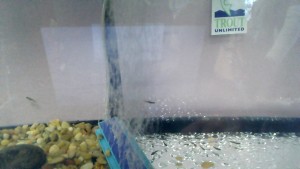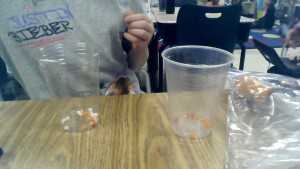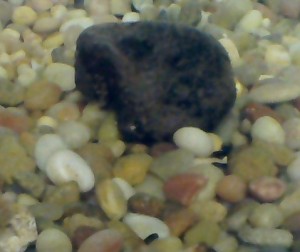Almost all of the trout are swimming up. There is one trout that they call a Bubble Rider. He goes over to the bubbles in the tank and rides up repeatedly. The little fry are very active. Fry are trout that are 1 inch or smaller in length.
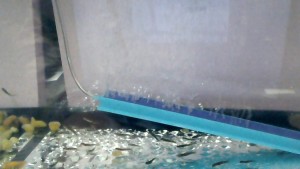
See the bubbles? See the riders?
They have completely lost their yolk sacs. Since they don’t have their yolk sacs anymore, some have eaten so much that their stomachs have absorbed, and look like Santa Claus’s.
In order for the trout to survive, the tank temperature has to be in a range of 52 degrees fahrenheit to 55 degrees fahrenheit.
I have listened to the second graders’ Trout Fact books. They have written a lot of useful information. This is what they look like:

Madison
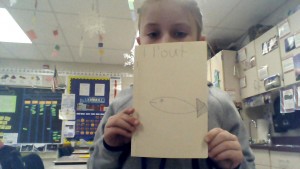
Anderson

Jasmine
What is your favorite type of fish?






